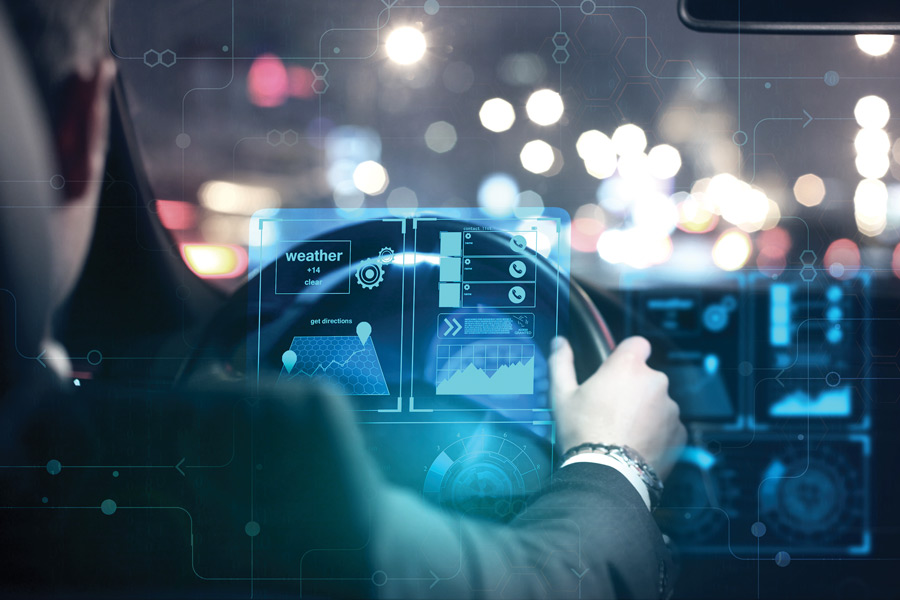By Bob Crescenzo
Telematics affect almost every aspect of your business, from your office’s phone system to your fleet vehicles. It’s an interdisciplinary field that encompasses telecommunications, vehicular technologies, road transportation safety, electrical instrumentation, wireless communications, and computer science. The impact of telematics on luxury ground transportation businesses is constantly evolving because telematics themselves are, too. And while they’re ever-changing, they are always impacting your company. This includes your chauffeurs; the sales, operations, customer service, driver training, and maintenance departments; and staff. So ask yourself these key questions: Do you give this all-encompassing component of your operation the time and attention it deserves? Are you able to truly integrate the impact of telematics into your overall profitability and potential for business growth?
 If the answers are “no,” then perhaps it is time to take stock of, review, and manage this very important business tool.
If the answers are “no,” then perhaps it is time to take stock of, review, and manage this very important business tool.
Very often operators put telematics into a small corner and think of them as simply GPS, ELDs, and other basic (or required) tools. However, adding in your tablets, smartphones, onboard braking systems, adaptive cruise control, event-recording cameras, back-up cameras, and affected operational components such as reservation and billing systems—to say nothing of social media platforms and accounts—opens up an entirely new view of how telematics truly affect your business. Also keep in mind that your passengers have their own “personal telematics” and may in fact have access to pertinent information before you do!
A Challenging Management Task for Chauffeurs
Many of these systems and devices are useful and create a smooth flow of communication, information, and assistance to your staff but, if not monitored and used effectively, they can also expose your entire company to additional risks.
Back-office systems and social media aside, there’s a lot of information passing between your company and clients, especially between chauffeurs and their passengers. When considering these added vulnerabilities, it is your chauffeur who may be most impacted by not only the information provided, but also the actual technology as well. The technology may actually create additional distractions for drivers (all drivers—civilian and professional) in the visual, manual, and cognitive areas. Consider the fact that almost everyone has a phone/tablet and, even it’s a “hands-free” device, the simple act of looking at it can become a visual distraction. If you actually push a button or touch a screen, that elevates it to a manual distraction; when compounded by any thought or decision that has to be made based on the information provided, it becomes a cognitive distraction as well.
"... your passengers have their own ‘personal telematics’ and may in fact have access to pertinent information before you do!"
And that’s just the handheld devices!
Consider your own vehicles: How may devices/telematics are included by the vehicle manufacturer (adaptive cruise control, lane-deviation devices, back-up camera, LED displays for numerous functions, etc.) and how many others you may have added (ELDs, event-recording cameras, WiFi, additional tablets, etc.). Now add in alerts from the office and whatever GPS program is providing turn-by-turn directions or monitoring for traffic and accidents. When all taken together, they create a distracting and challenging environment for your chauffeur. Add in the telematics your passengers have, including the ability to record everything and/or create sound distraction, and your chauffeur is bound to be on information overload. Chauffeurs are basically driving high-tech computers instead of just luxury vehicles; while the screens make everything attractive and convenient, staring at a screen and listening for safety alerts can be overwhelming for the senses.
Just a few examples of internal distractions may include:
• Passenger-related issues
• Noise (movies, WiFi issues, loud music, conversations)
• Office communications (phone calls, EVRs, ELDs, systems tracking lane departures or collision avoidance, total productive maintenance systems, etc.)
• Onboard/personal navigation systems
• Instrument displays
• Tour guides, tour guide responsibilities, contact with dispatch or the office
Thinking about all of these displays and means of communication, it is important to recognize that not all chauffeurs learn or process information at the same level. In fact, the age and “electronic experience” of the chauffeur may play a strong role in both understanding how to communicate with them and how they process the information provided both visually and cognitively.
Questions to consider in this instance are:
• How many devices is your driving team required to manage?
• How many vehicles have LCD screens?
• How many of your chauffeurs are older than 40?
The ability to read and comprehend different symbols changes with age and experience. Consider the findings of academic studies conducted on the subject:
• More familiar and more comprehensible symbols were more easily understood by both younger and older adults, whereas high complexity symbols were more difficult to comprehend by older adults.
• Adapting your technology training to every single one of your chauffeurs is an important behind-the-wheel training and company risk management issue.
• To optimize comprehension by older adults, complexity should be minimized and symbols should have a clear relationship to the product.
• Alternatively, symbol design could incorporate cues to knowledge to facilitate the linkage between new knowledge and relevant knowledge in long-term memory.
Applying Telematic Information To Your Operation
There is another side to navigating and managing your company’s telematics beyond how it impacts your chauffeurs and other staff. What are you doing with the information generated by these devices, such as speed and hard braking alerts? Do you actually share these results with your team and use the information to reduce risk through training? Those distractions are also being felt by your clients, not to mention the added wear on your vehicles. You may be getting the alert, but your passenger is on the receiving end and could be one Yelp or Facebook post away from complaining about your chauffeur’s lead foot or abrupt stops.
"Adapting your technology training to every single one of your chauffeurs is an important behind-the-wheel training and company risk management issue."
 If you are not considering these things, in the event of a crash, all of the data may become relevant to why the crash occurred. If you have months of reports that have not been properly reviewed, analyzed, and applied to resolve driving issues, then your company may been seen as a “bad” company and be exposed to the kind of post-accident punitive damages that are not covered by your commercial auto policy.
If you are not considering these things, in the event of a crash, all of the data may become relevant to why the crash occurred. If you have months of reports that have not been properly reviewed, analyzed, and applied to resolve driving issues, then your company may been seen as a “bad” company and be exposed to the kind of post-accident punitive damages that are not covered by your commercial auto policy.
For example, a chauffeur who continually generates speed alerts (even “just” five-10 miles faster than the speed limit) and has a crash exposes you and your company to a very important insurance question: Why wasn’t something done to stop this poor driving behavior? The outcome of any claim can be impacted by the telematics-driven information and the data you have and/or retain. This is a good reason to regularly review, analyze, and apply the data to train and retrain the necessary chauffeur. It’s also a good reminder as to why you should both have and follow a written data disposal protocol.
The same can be said for ELDs and the data they collect. Hours of Service regulations require you to have the information available for six months; in the days of paper logs, it was easy to simply dispose of them after the required six-month period passed. Electronic data may in fact be available for a lot longer (if not forever under certain circumstances), so be sure to check with your vendor and update your data disposal policy to include managing and properly disposing ELD information when permissible.
Finally, reviewing and answering these questions about telematics is important:
• What do you do with your information?
• Who manages it?
• How do you document the process?
• Who maintains the data?
• Who updates the software?
• Who provides staff and chauffeur training?
• How much data is available?
• How is the data disposed of when it’s permissible to do so?
Telematics may in fact create an opportunity to improve and grow your business, as well as keep your staff and customers happy and satisfied. Be sure, however, to update your training, policies, and procedures as well as your data retention policy as you use and apply more telematics-driven information.
[CD0918]
Bob Crescenzo is the Vice President for safety & loss control of Lancer Insurance Company in Long Beach, NY. He can be reached at bcrescenzo@lancerinsurance.com.

